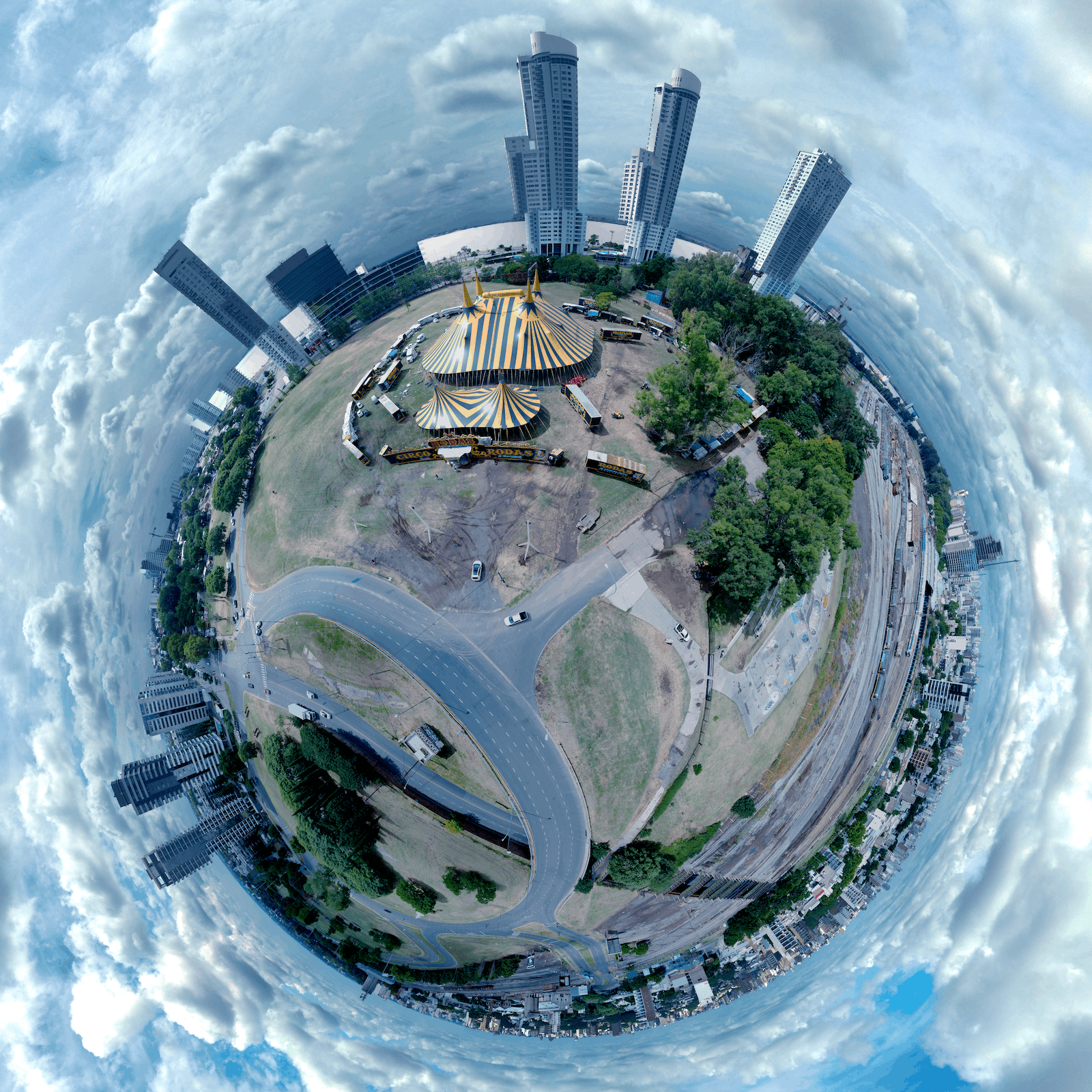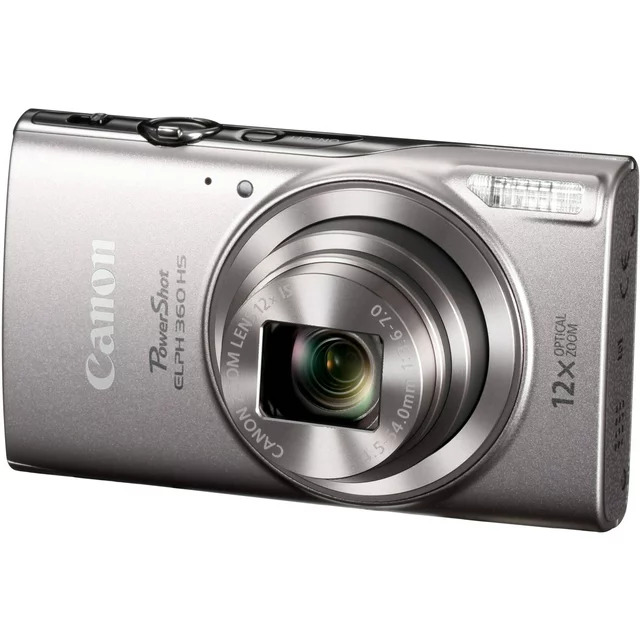
Keep your Canon lenses spotless with this all-in-one kit — includes brush pen, air blower, and microfiber cloths.
👉 Check it out on Amazon
The realm of photography has seen a myriad of innovations over the years, but few are as immersive and comprehensive as 360° photography. This technique captures every angle, every perspective, and every viewpoint of a scene, offering viewers an unparalleled visual experience. Whether for professional use or personal enjoyment, 360° photography has opened up a world of possibilities in imaging. Let's delve into this fascinating domain and explore its multifaceted applications in today's modern world.
The Science Behind 360° Photography
Before diving into its applications, it's essential to understand what 360° photography is. Unlike traditional photographs that capture a fixed perspective, 360° images use a series of wide-angle lenses—or an array of cameras—to capture every possible angle of a scene. These individual shots are then stitched together using specialized software to create a seamless panoramic image. The result? An interactive photograph that viewers can navigate, exploring every angle as if they were physically present at the scene.
Applications of 360° Photography in the Modern Era
-
Virtual Reality (VR) and Augmented Reality (AR): Perhaps the most transformative application of 360° photography lies in VR and AR. From virtual property tours to immersive video games, this photographic technique is the backbone of many VR experiences, allowing users to explore virtual worlds in all their panoramic glory.
-
Tourism and Travel: Destinations, hotels, and attractions utilize 360° images to offer virtual tours, allowing potential visitors a sneak peek into their offerings. This interactive experience can be a decisive factor for many when choosing their next travel destination.
-
Real Estate: Property listings with 360° tours allow potential buyers or renters to explore homes, offices, or commercial spaces from the comfort of their own homes. This tool has proven especially useful during times when physical visits might be challenging.
-
Automotive Industry: Many automobile companies now offer 360° views of their vehicles, allowing customers to explore interiors and exteriors in intricate detail, giving them a near-showroom experience online.
-
E-Commerce and Retail: From exploring the nuances of a product to virtual fitting rooms in fashion outlets, 360° images offer online shoppers a more tangible sense of the products they're considering.
-
Museums and Cultural Sites: Virtual tours of galleries, heritage sites, and museums, enabled by 360° photography, ensure that culture and history are accessible to all, regardless of geographical constraints.
-
Event Spaces: Banquet halls, conference centers, and other event spaces use 360° images to showcase their venues to potential clients, aiding in event planning and visualization.
-
Journalism and Documentary: Interactive 360° photos allow readers to step into a news story, offering a profound, immersive understanding of events and places.
-
Education and Training: From virtual labs in science courses to interactive history lessons, educational institutions are leveraging 360° images to enhance learning experiences.
-
Sports and Entertainment: Imagine exploring a stadium during a significant sporting event or being "on stage" during a concert! 360° photography is changing how we experience and recall major events.
Creating Your Own 360° Masterpieces

With the increasing affordability and availability of 360° cameras, many photography enthusiasts are venturing into this domain. Here are some quick tips for those keen on creating their own panoramic images:
-
Steady the Camera: Stability is crucial. Use tripods or stabilizing equipment, especially if taking a series of shots for stitching.
-
Mind the Lighting: As with traditional photography, good lighting can make a significant difference. Ensure even lighting to avoid shadows or overexposed segments.
-
Choose Engaging Scenes: Locations with rich details, varying depths, and interesting elements can make for more engaging panoramas.
-
Post-Processing: Use reliable stitching software and spend time refining the image. Small imperfections become more noticeable in interactive views.
The Science & Future of 360° Photography
360° photography, sometimes known as panoramic photography, involves capturing images in every direction of a scene. The resulting set of photos is then stitched together to form a single, seamless image that offers a 360° view of the scene. Several algorithms and techniques are employed to achieve this result:
-
Feature Detection and Matching: Before the photos can be stitched together, overlapping features between different images need to be identified. Algorithms like the Scale-Invariant Feature Transform (SIFT) and Speeded-Up Robust Features (SURF) are commonly used for this purpose. They help in detecting and describing local features in images, allowing for accurate matching between photos.
-
Image Alignment: Once features are matched, the photos can be aligned based on these matches. The goal is to ensure that the overlapping parts of the images align perfectly to avoid any visible seams. Homography matrices, often solved using the RANSAC (RANdom SAmple Consensus) algorithm, are employed to align images.
-
Bundle Adjustment: This is a refining step that adjusts camera positions and scene structures to minimize reprojection errors. Essentially, it optimizes the alignment and overlap of images in the panorama.
-
Seamless Blending: Once aligned, the images must be blended together to ensure that there are no visible boundaries or artifacts where they overlap. Algorithms like Multi-Band Blending and Graph-cut Textures are often used. These techniques ensure that the transition between one photo and the next is as seamless as possible.
-
Equirectangular Projection: For 360° photos to be viewed correctly, especially in VR settings, they often need to be mapped to an equirectangular projection. This format allows the 360° image to be viewed as a flat 2D image, which can then be correctly mapped onto a 3D sphere for viewing.
-
HDR (High Dynamic Range) Integration: In scenes with varying light conditions, multiple shots of the same scene with different exposures may be taken and combined. This is done using HDR algorithms that merge these photos to create a single image with the best lighting conditions from each exposure.
-
Color and Tone Correction: To ensure consistent color and lighting across the stitched image, algorithms that perform color correction and tone mapping might be employed. This helps to balance out any disparities in color or brightness that could be jarring in the final panorama.
-
Stereo Panorama Generation: For 3D 360° photography, algorithms will take photos from two slightly offset positions (emulating the distance between human eyes) and combine them to generate a sense of depth in the final image.
The software tools used in 360° photography, like PTGui, Autopano, and Adobe's suite of tools, often employ a combination of these algorithms under the hood, offering photographers a more streamlined and user-friendly experience. As technology progresses, we can expect even more advanced algorithms to emerge, further simplifying the process and improving the quality of 360° photographs.
The future of 360° photography is boundless. With advancements in AR and VR technology, as well as the integration of AI in image processing, the next generation of 360° images might be even more immersive, with enhanced interactivity and realism.
In conclusion, 360° photography has revolutionized the way we perceive and interact with images. It has bridged the gap between static visuals and real-life experiences. As technology advances, this form of photography will undoubtedly continue to evolve, further blurring the lines between the virtual and the real, and reshaping industries in its wake.
